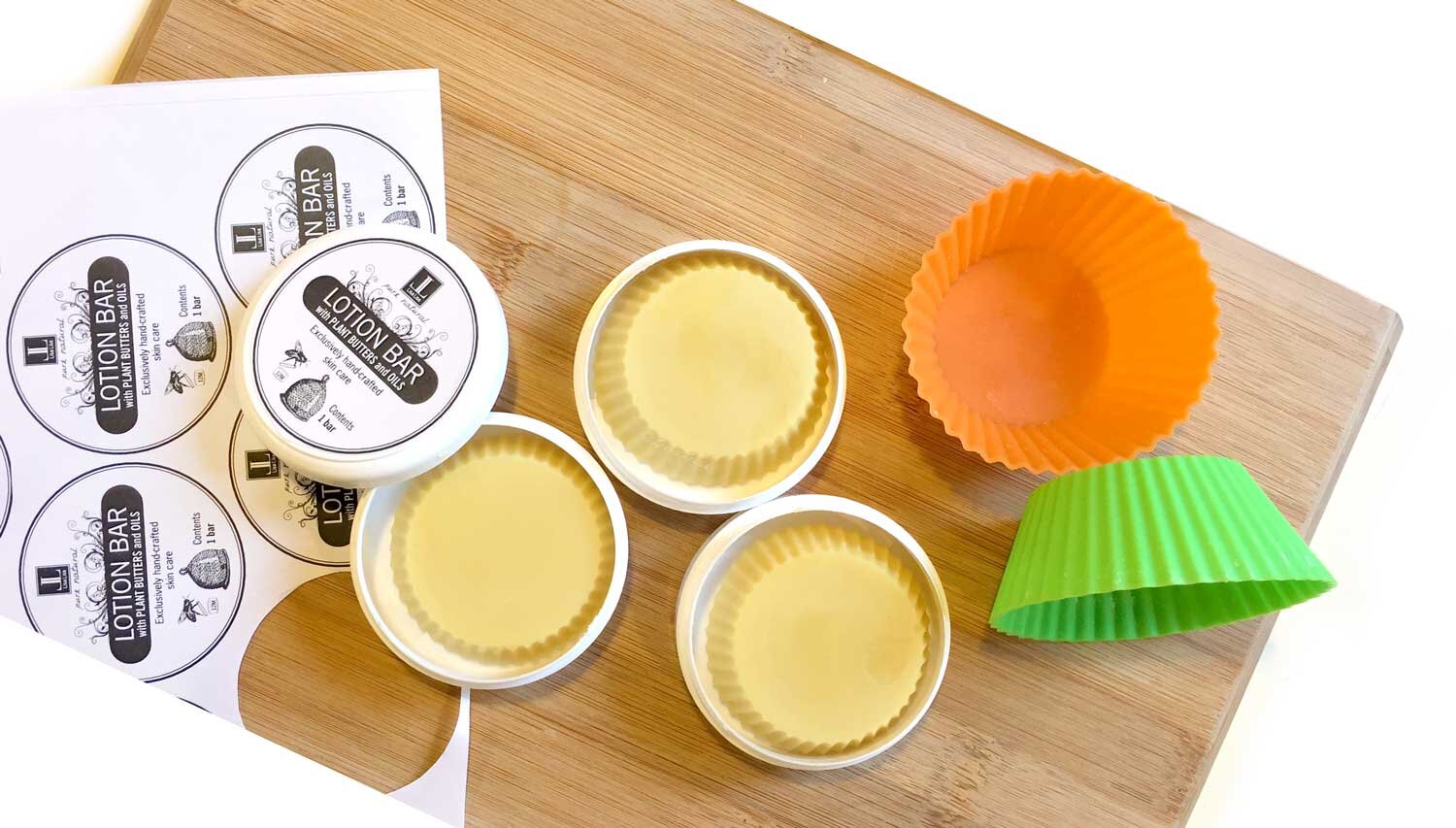Method
Weigh ingredients and add oils and wax to beaker or other heatproof container
Melt waxes and oils slowly over low heat until thoroughly melted (water bath is ideal)
Remove from heat, add butters (which are at room temperature and have been cut into small uniform pieces so they melt evenly) and stir until fully melted
Add antioxidant
Continue stirring until the mixture turns opaque and starts to thicken.
Pour into molds and let set in a refrigerator for about 30 - 60 minutes (or until fully set)
Unmold and enjoy!
Tip: Experiment with different ingredient combinations and make very small batches at a time. Remember to keep notes so you can recreate your successes.
Extra Tip: Do NOT measure cosmetics ingredients by volume. A 'teaspoon' of wax is not an accurate measurement. Measuring by weight is the only way to be sure of exactly how much of each ingredient is in your product.
Get Creative
Lotion bars can be fancied up or simplified to your hearts (and skins) desire.
For the bars pictured above, I used a very simple combination of beeswax, coffee-infused jojoba, and shea butter with e-vitamin as my chosen antioxidant.
Note that butters have different hardnesses. Feel free to mix the butters you prefer. Harder butters will give you a more solid bar, softer butters will (obviously) result in a softer bar.
You can substitute beeswax with rice bran wax, berry wax, or any other skin-friendly wax. Using other waxes is going to require a bit of experimentation to get the consistency to your desire. With vegan waxes, I find a combination usually works best.
The oil doesn’t have to be one oil - it can be a blend of different oils.
Tip: if you are using heat-sensitive oils, do not heat them, but add them as the mixture is cooling (pour in a slow steady stream while stirring constantly to avoid lumping)
Warning: If you do not keep detailed notes on your experiments and batches, this is going to happen: your very first batch will be the most perfect, luxurious lotion bar on the planet. It will make your skin sing and be pure unadulterated pleasure to use. People will flock to you asking to buy. News will spread and several major cosmetics companies will beg you to let them mass produce and sell your fabulous creation. You will then spend the next 10 years trying to recreate your formula because you were convinced you would be able to remember exactly what you did.
Don't say I didn't warn you.
Do Tell
Do you make lotion bars? What’s your favorite ingredient combination?
For more anhydrous formulas, check out the book below.


















